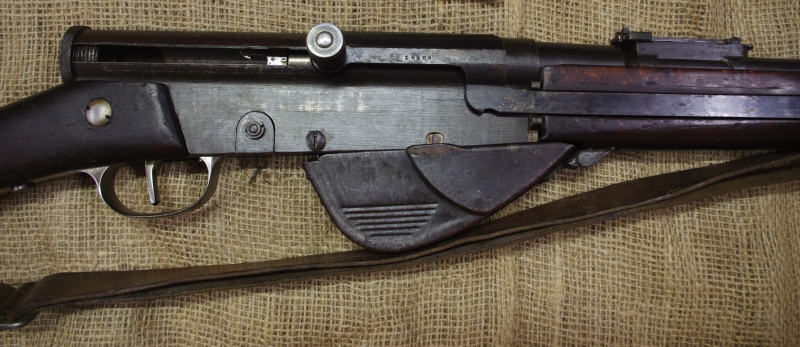From the end of the 1890s, our various design offices began to study the production of a semi-automatic rifle. At that time besides and until 1952, the semi-automatic weapons are called automatic rifles. It follows many prototypes produced by the Technical Section of the Artillery (STA), the Normal School of Shooting (ENT), the Technical Commission of Versailles and the Establishment of Artillery of Puteaux. Some were tested in troop corps like the FA A4 of the STA or the FA APX 1910 but the studies were delayed and on the eve of the First World War it became obvious that we should not risk radically changing our armament individual. Only one prototype, the STA N°8, was officially adopted,
The "fashion" of the time being more towards the transformation of existing weapons (hunting pot transformed into Gras, Gras rechambered into 8 mm Lebel etc...) than to the adoption of new weapons some engineers meet in 1915 and offer their "new" weapon. This "association" is made up of Colonel CHAUCHAT and engineers SUTTER and RIBEYROLLE, already known for their FM RSCG 1915 known as FM Chauchat.
Their prototype is based on the components of the Lebel (stock, barrel, fittings) and the Mle 1916 rifle (barrel and rear sight) in order to make the existing stocks profitable and above all to coax the adoption commission, which is always sensitive to savings. The breech system is "borrowed" from the STA No. 4 trial rifle to save even more time. All of this is pleasing, and, as a final touch, the weapon uses the standard infantry cartridge whereas the A6 used a specific 7mm cartridge. After a laborious development the final prototype was adopted in May 1916 under the
On April 1, 1917 the production of the FA RSC 1917 was finally launched and the weapon was sent to the front at a rate of 16 per company, allocated in priority to good shooters. These are carefully chosen because the weapon is capricious and men need to take care of their weapon in order to limit the damage. While the Meunier A6 works correctly, the FA 17 has many faults (jamming, rupture at the piston, casing opening during firing, excessive weight and length, unsuitable cartridge shape) but it had the merit of being the first semi-automatic rifle to equip infantry on a relatively large scale. Other countries had staffed FSAs such as
The FA 17 will undergo some minor modifications aiming at simplifying the manufacture and the operation, in particular on the device of stopper of breech, which will give the weapons of the 2° then of the 3° type (unofficial designation).
Towards the end of the war it was decided to shorten the FA 17 by about twenty centimeters but few copies were made and probably none saw the front. The main defect of the FSA 17 was its specific clip, not interchangeable with that of carabiners and mle 16 rifles, a major modification of the weapon was therefore carried out just after the war which made it possible to remedy this drawback. Other modifications cause the weapon to change its name and become the
RSC 1918 automatic rifle.
During the period between the two wars, a strange modification was made, the gas inlet hole was blocked, so semi-automatic operation was now impossible and the shooter had to manually rearm after each shot fired... Why such a backward step? perhaps the sacrosanct obsession with the "waste" of ammunition... As a result, the only advantages of the weapon being removed, its faults reappear all the more and make it fall into disgrace. Shortly after it was abandoned and it was therefore with the old manual repeating rifles (Lebel, carabiners and mle 16 rifles) that our infantrymen entered the Second World War.
Reference
PD14
€8000
Firearm calibre
8 X 50R
Circa
1917
Military marks
Yes
Matching numbers
Yes
Licence
Model 3
Model 4
Theme
Firearms
Finish
9
Refinished
No
Mechanics
10
Bore
9
Stock
8
